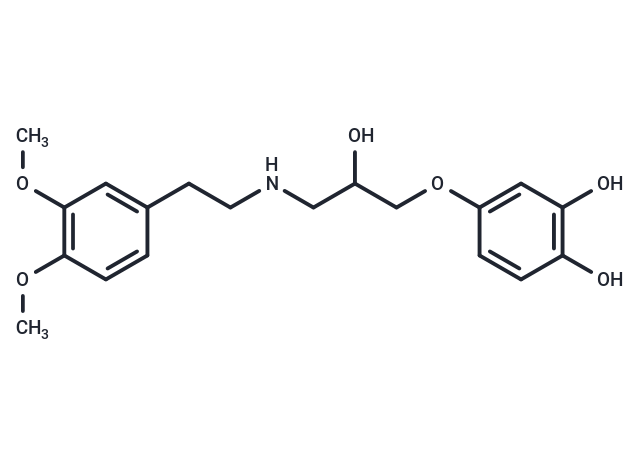Shopping Cart
- Remove All
 Your shopping cart is currently empty
Your shopping cart is currently empty

RO 363 is an effective inotropic stimulant and is a cardiovascular modulator that decreases diastolic blood pressure and pronounces increases in myocardial contractility. Ro 363 is an effective and highly selective β1-adrenoceptor agonist.

| Pack Size | Price | Availability | Quantity |
|---|---|---|---|
| 25 mg | $1,520 | 6-8 weeks | |
| 50 mg | $1,980 | 6-8 weeks | |
| 100 mg | $2,500 | 6-8 weeks |
| Description | RO 363 is an effective inotropic stimulant and is a cardiovascular modulator that decreases diastolic blood pressure and pronounces increases in myocardial contractility. Ro 363 is an effective and highly selective β1-adrenoceptor agonist. |
| In vitro | RO 363 is approximately half as effective as (-)-Isoprenaline in tissues where actions are due to β1-receptor activation (guinea-pig atrial and ileal preparations and ventricular strips from the rabbit, rat, and guinea-pig. In spontaneously contracted tracheal preparations from the guinea-pig, RO 363 is a full agonist and is approximately half as potent as (-)-Isoprenaline. These effects of RO 363 are due to the activation of a population of β1-receptors in the tissue since RO 363 and (-)-Isoprenaline have the same relative potencies in trachea, cardiac and ileal preparations. Isolated perfused heart preparations from guinea-pigs developed arrhythmic contractions following the administration of Ro 363 in doses producing 70-100% of its maximal chronotropic responses [1][2]. |
| In vivo | Ro 363 elicits ventricular arrhythmias following the administration of subarrhythmic doses of ouabain and increases the number of subauricular escape beats which occurred during vagal nerve stimulation in non-ouabain treated animals. In chloralose-anesthetized cats, Ro 363, when compared to epinephrine, is essentially devoid of arrhythmogenic activity in animals in which cardiac sensitization is induced by U-0882 or halothane [1]. |
| Molecular Weight | 363.4 |
| Formula | C19H25NO6 |
| Cas No. | 74513-77-2 |
| Relative Density. | 1.31g/cm3 |
| Storage | Powder: -20°C for 3 years | In solvent: -80°C for 1 year | Shipping with blue ice. |

Copyright © 2015-2024 TargetMol Chemicals Inc. All Rights Reserved.